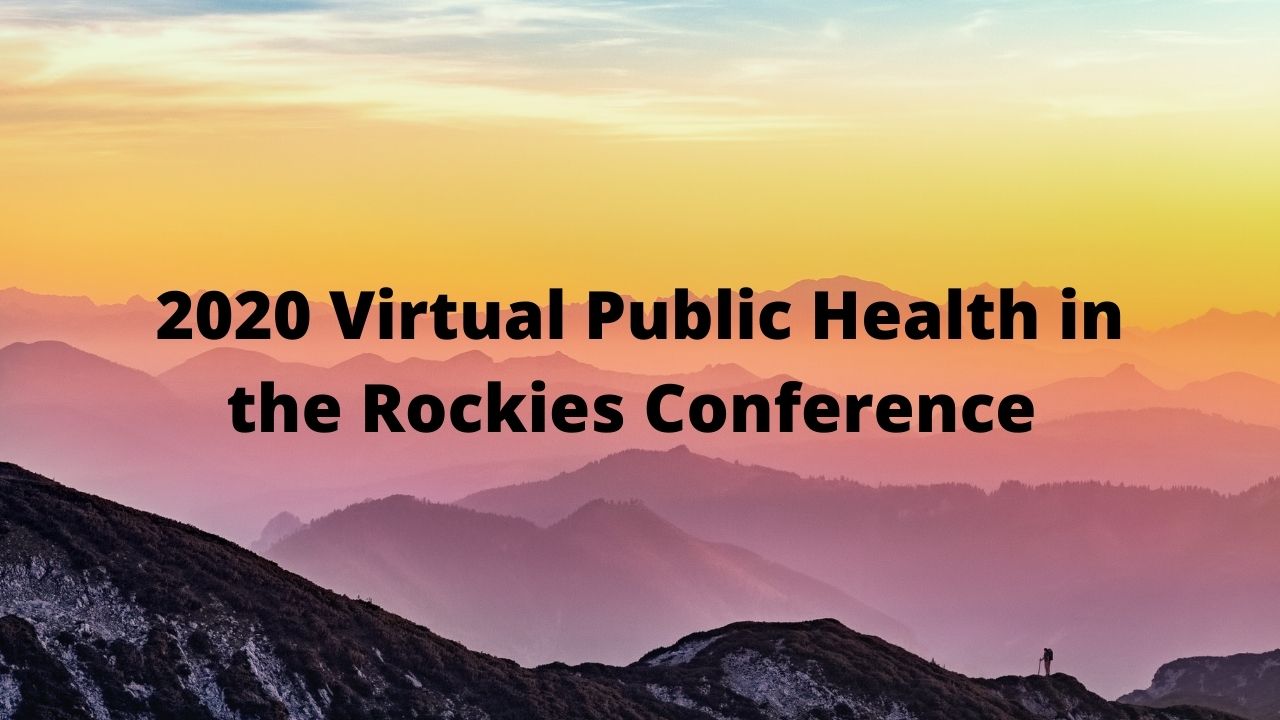With many conferences being cancelled this year due to the COVID-19 pandemic, the organizers of the annual Public Health in the Rockies (PHiR) conference were determined to still provide an opportunity for education, networking and skill development for professionals and students in Colorado and neighboring regions. As a result, the conference shifted online and had a significant focus on the hardships of the pandemic.
Colorado School of Public Health students indicated they were more able to participate in this event through the online offering, and it’s clear that they gained valuable knowledge and perspectives through their experience.
Jen Roux, a second-year MPH student in the Global Health and Health Disparities concentration in ColoradoSPH at CSU, describes how the conference going virtual had its advantages.
“I have a wide range of interests when it comes to public health and having the conference virtually allowed me to attend multiple sessions with ease. While I missed the ability to network in-person, the conference was still very informative, and I learned about critical current public health research happening today,” said Roux.
Roux also noted that hearing from professionals working in the field right now was inspiring and motivating for what is to come for her entering the job market in a few months. She said as a student, that opportunity was invaluable.
“My favorite speaker was Holen Hirsh from the OMNI Institute, who is incredibly knowledgeable in the behavioral health field and presented on the current substance use crisis in Colorado, which has been inflated due to COVID,” Roux said.
Deena Brosi, a PhD student in Health, Systems, Management and Policy in ColoradoSPH at CU Anschutz, presented at this year’s conference. Her research involved an analysis of COVID-19 death rates by county and public health systems’ capability.
“I found the public health systems’ capabilities that were considered the strongest (comprehensive public health systems) were associated with 13.1% less COVID-19 deaths per 100,000 people compared with middle (conventional) and weak (limited public health resources) systems”, said Brosi. “This was controlling for a range of variables that were known to put individuals at higher risk of COVID-19 death including race, income, population density, population in a nursing home, and many others.”
Brosi appreciated the conference shift to more of a COVID-19 focus. She heard from researchers and health workers who have transitioned from what they were doing more towards COVID-19, and like her, they did it because they felt they could make a positive contribution.
Kelsey Owsley, who is also a PhD student in Health Services Research in ColoradoSPH at CU Anschutz, also presented her research at this year’s conference. Her research study looked at the capacity of public health systems in rural and urban areas from 2014-2018.
“We found a diverging trend and widening disparity between urban and rural communities,” explained Owsley. “Urban communities are increasing the number of recommended public health activities implemented as well as the number of partnering organizations, while rural areas are becoming more constrained in terms of their activities and engagement in partners, which is an area of opportunity for growth.”
Kacie Hutton, who is an MPH student in the Physical Activity and Healthy Lifestyles concentration in ColoradoSPH at CSU, particularly liked the conference’s Aging and Public Health track because it talked about the importance of safety, physical activity, and housing security for our older populations.
“We always need to be aware of barriers faced by older adults that can impact their health. It reminded how important it is to listen to others and to be inclusive,” Hutton said.
With the virtual format, the PHiR conference was still able to create an engaging experience that benefitted students and practitioners. Nassia Duncan, a first year MPH student at ColoradoSPH at CU Anschutz, felt that the conference was a valuable resource to showcase and exchange ideas in the public health world.
“It was cool to see how broad the field of public health is and how many areas of study are available,” she said.
Written by Megan Jansson

